40 Excellent Children’s Books About Physical Disabilities
This post may contain affiliate links.
Why do we need good children’s books with characters who have physical disabilities? Because the representation of physical disabilities and physical differences in children’s books IS SO IMPORTANT! Kids need to see themselves as heroes of stories –> mirrors. And other kids need to step into the lives of someone else to build empathy and understanding –> doors and windows.
It’s absolutely essential that we respectfully talk about physical disabilities with children, especially with children who don’t have a disability.
If we don’t, disabilities become the elephant in the room. And as a result, children mistakenly interpret that having a physical disability is taboo. It’s not. Adults know that disabilities are NOT wrong. Nor taboo. But what message do we send kids if we don’t talk about real issues like this one?
As we’ll see in the following stories, everyone notices differences. Especially curious children. So it’s up to us to discuss and help our children learn about disabilities without stigmas.
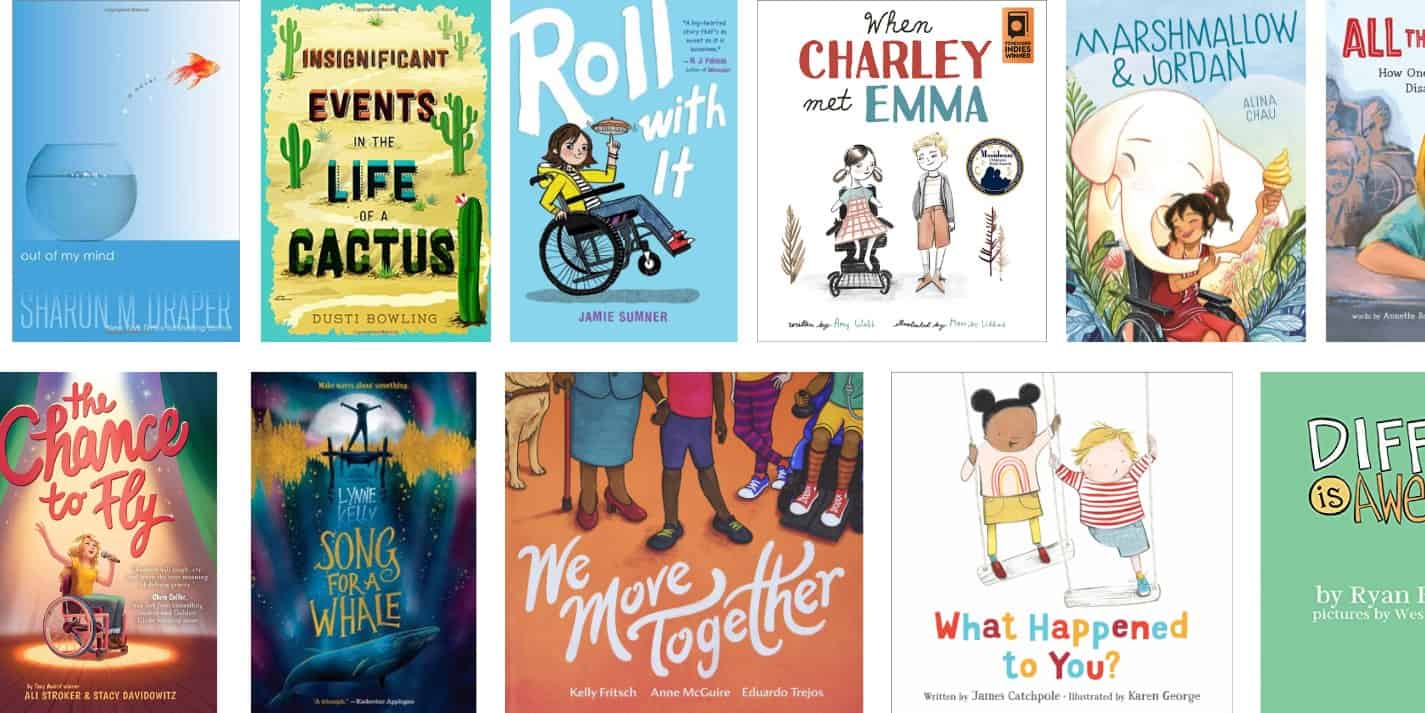
It’s up to us to answer questions and to help kids see what it might feel like to have a physical disability.
This is the way to ensure that we raise compassionate, empathetic, and kind children.
And, for kids with disabilities — these are good children’s books (picture books, chapter books, middle grade books, and YA books) that show disabled kids who are the heroes of their stories. We need more representation like this!
What Are Physical Disabilities?
Physical disabilities are impairments in a person’s body structure or function, according to the CDC. These include hearing loss, spinal cord injury, Cerebral palsy, muscular dystrophy, Multiple sclerosis, Epilepsy, Blindness, and Cystic fibrosis.
Teach Kids to Be Kind
I recently saw a great idea on Facebook that recommended instead of saying, “Don’t stare,” say to your kids, you say to them, “Say hello.” I love that!
Let’s read stories that help us become empathetic to other people’s experiences and our own; stories that show not just our differences but, more importantly, our similarities.
*originally published 3/2016, updated 7/2023
Children’s Books About Physical Disabilities
Picture Books About Physical Disabilities
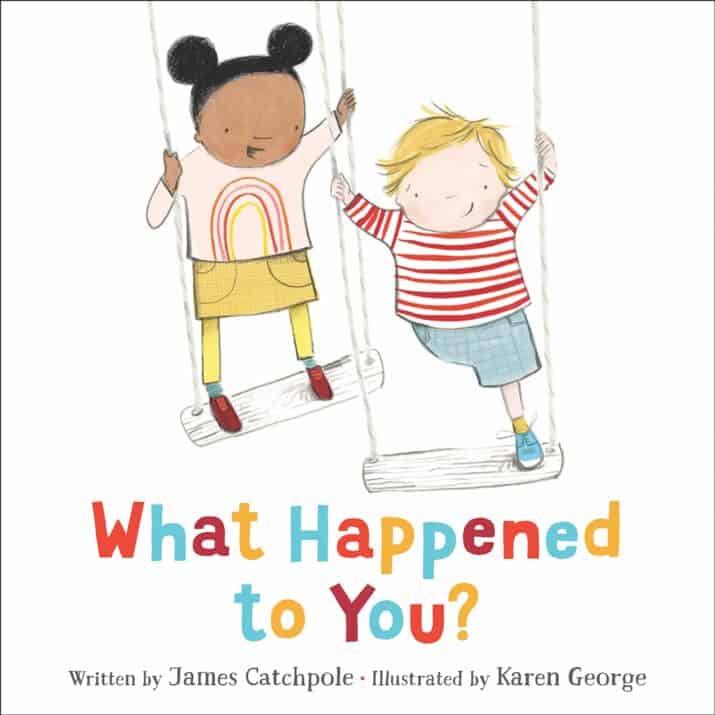
What Happened to You? by James Catchpole, illustrated by Karen George
Joe loves playing pirates. Sharks and crocodiles are easier to deal with than kids who ask questions like “What happened to you?” or “Did it fall off?” or “Was it a lion?” Joe tries to avoid their questions. The other kids finally stop asking about his leg and ask about the crocodiles and join Joe in playing pirates, which is much more important!
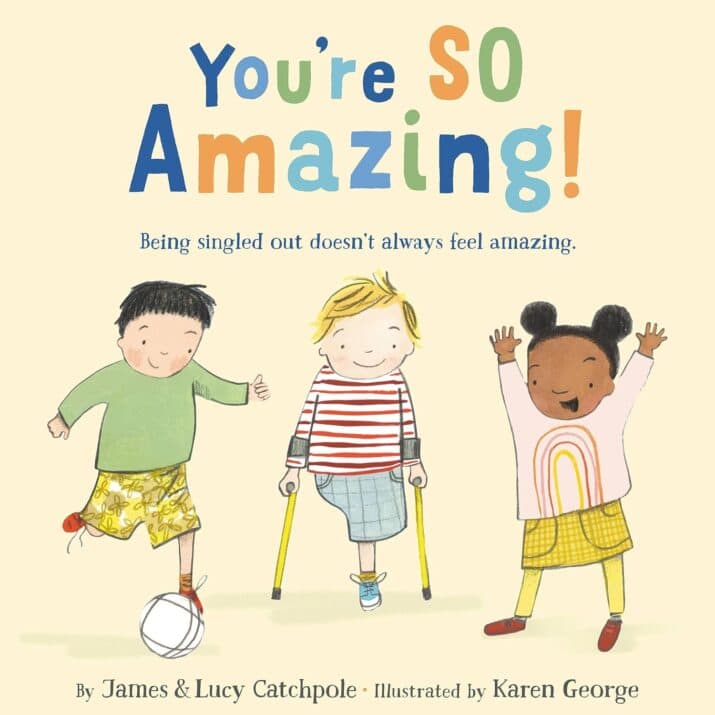
You’re So Amazing! written by James & Lucy Catchpole, illustrated by Karen George
Adults and other kids see Joe playing with friends and say that he’s amazing When he doesn’t play, they see him as pathetic. Joe doesn’t want to be either– he just wants to be Joe! And that’s what his friends see. Just Joe, a kid who loves to play soccer and monkey bars and pirates with his friends. This book reminds readers that disability is normal and disabled kids don’t want to be framed as inspirational or pitiful. We’ve needed this book in the world. Highly recommended.
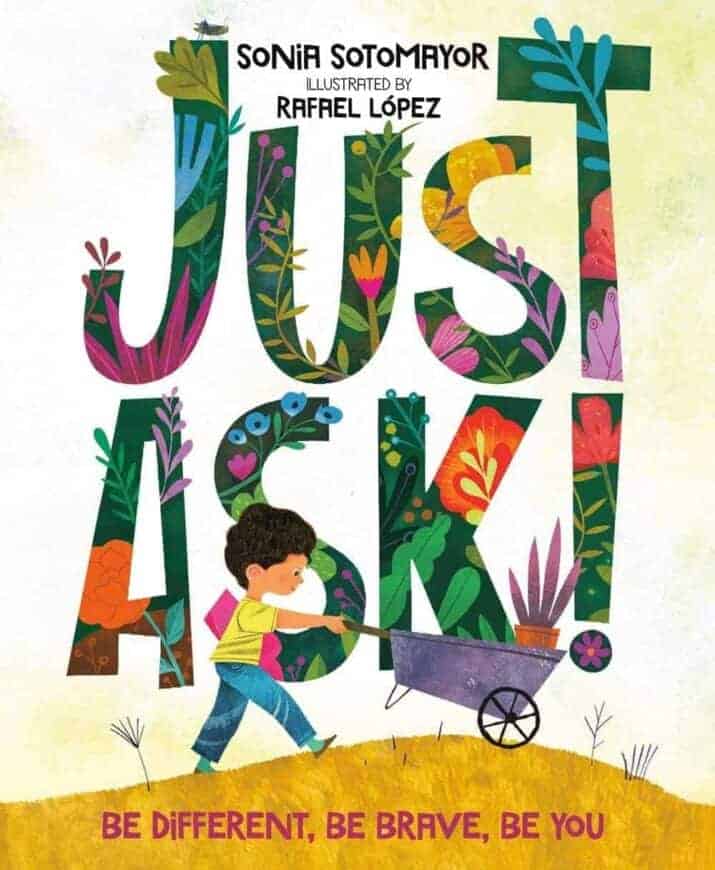
Just Ask! Be Different, Be Brave, Be You by Sonia Sotomayor, illustrated by Rafael Lopez
A must-own lavishly illustrated book that is both eye-opening and empathy-building as it increases the reader’s understanding of people with physical disabilities and neurological differences. Each two-page spread features a different kid who introduces themselves and then asks a question to the readers. For example, Rafael has asthma and sometimes has trouble breathing. He asks, “Do you use a tool to help your body?” The book features kids with autism, a wheelchair, dyslexia, Tourette’s syndrome, ADHD, food allergies, Down syndrome, and more. It shows all these kids working together to plant a garden, showing that just like the variety of plants in the garden, our differences make the world more interesting and richer.
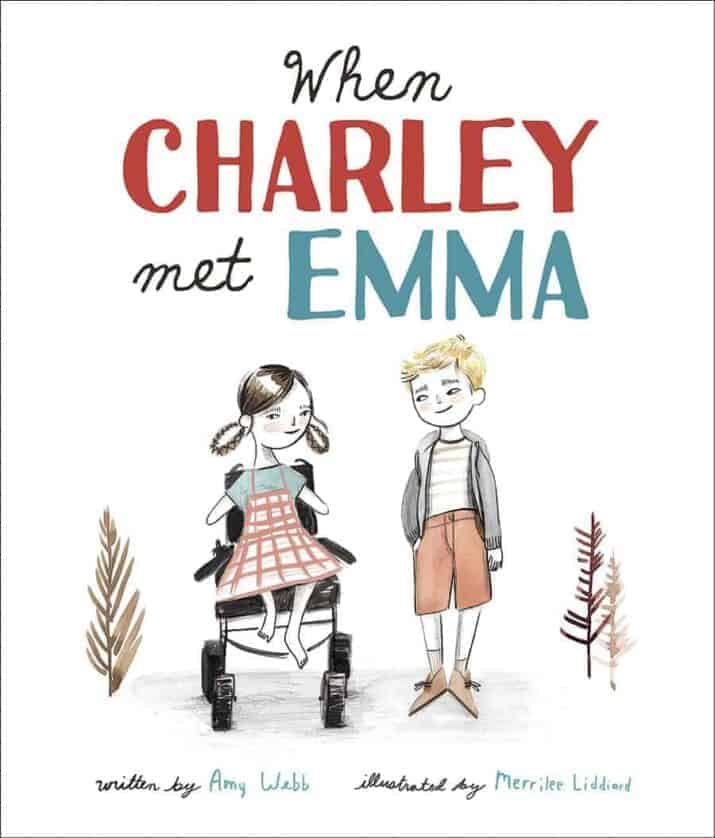
When Charley Met Emma by Amy Webb, illustrated by Merrilee Liddiard
When Charley feels different, his mom teaches him that “Different isn’t weird, sad, bad, or strange. Different is different. And different is OK!“ His mom suggests that Charley introduce himself to Emma because everyone wants friends. Charley apologizes for what he said at first and asks Emma questions. Emma helps Charley know that even though she’s a little “differenter” than he is, she’s a lot the same, too. For example, Emma likes to play on the playground, swing, play tag, and just like Charley, draw! This compassionate story models the importance of accepting differences with kindness and open-heartedness.
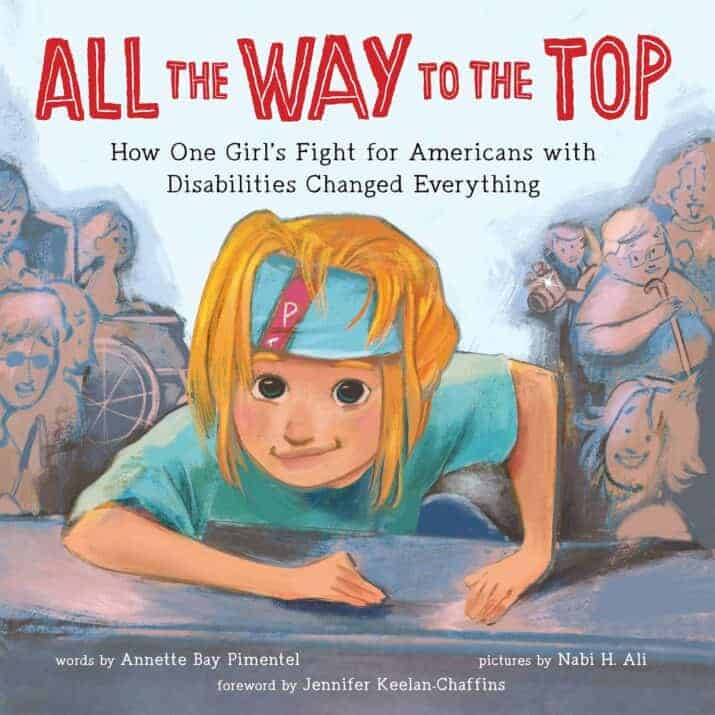
All the Way to the Top: How One Girl’s Fight for Americans with Disabilities Changed Everything by Annette Bay Pimentel, illustrated by Nabi H. Ali
Jennifer uses a wheelchair because of her cerebral palsy. Using a wheelchair means that she can’t get into the neighborhood school with stairs or eat lunch in the cafeteria with the other kids. So, even though she’s a kid, Jennifer joins other activists to speak up for access to all places — asking Congress to pass a law called the ADA, the Americans with Disabilities Act. When the law doesn’t look like it’s going to pass, Jennifer leaves her wheelchair to crawl up the steps (no ramps) of the Capitol building in Washington, D.C. Eventually, Congress finally passes the ADA!

We Move Together by Kelly Fritch, illustrated by Anne McGuire
Sometimes we wait, and sometimes we get stopped in our tracks. “We plan, we solve problems, we build something better.” This book shows how people work together to understand each other, even when they they disagree. It shows mixed-ability kids moving in their own ways maybe on bikes, strollers, or buses and with assisted devices like walkers, wheelchairs, and canes. Moving together we can make changes in the world.
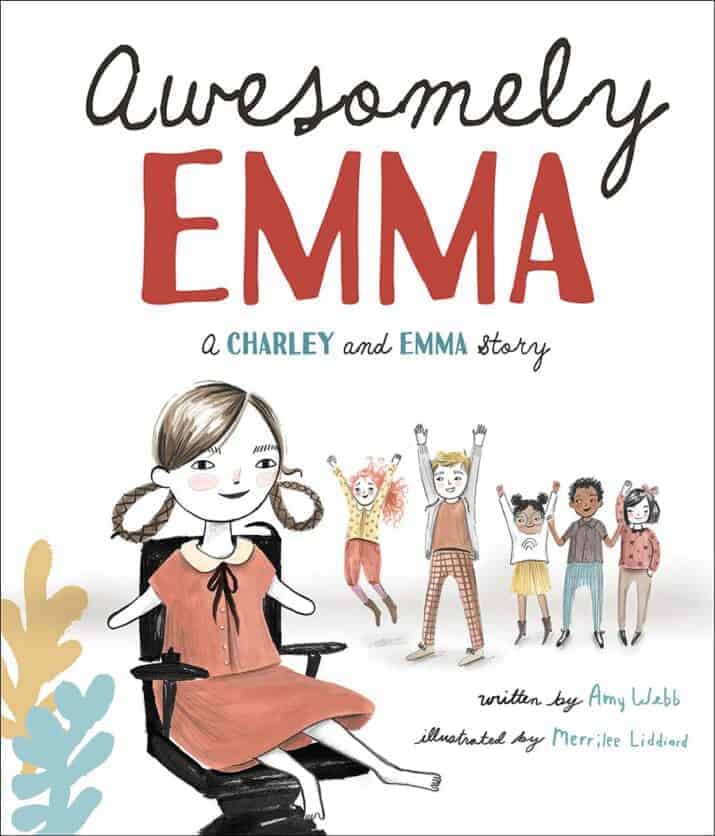
Awesomely Emma: A Charley and Emma Story by Amy Webb, illustrated by Merrilee Liddiard
Self-confident Emma not only loves art, but she knows a lot about it. So she’s thrilled to go on the art museum field trip…until she can’t go in the front door because there’s no ramp for her wheelchair. Later, she feels mad when Charley does things for her, like pushes her chair or gets out her stuff without asking. Emma helps Charley understand that it’s HER choice to ask if she wants help. The story ends with the museum’s positive response to the class’s letter asking for accommodations for all kinds of bodies. I love how this story enlightens and educates readers to not just limb differences but respect for others.
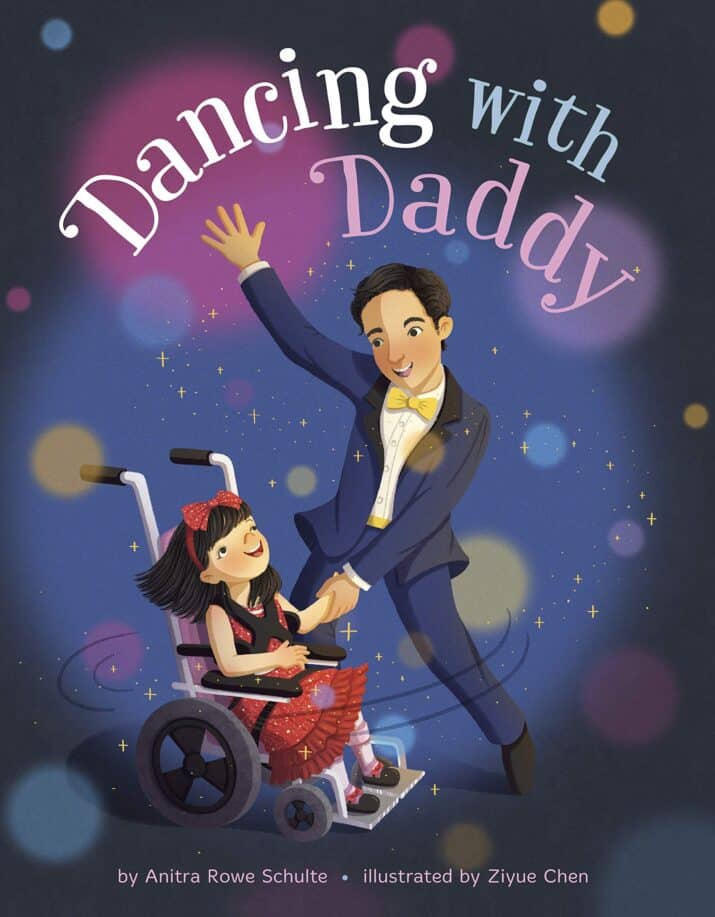
Dancing with Daddy by Anitra Rowe Schulte, illustrated by Ziyue Chen
Elise, a girl in a chair, can’t wait to go to the father-daughter dance. She picks out a dress and practices her dance moves. Finally, she gets to go to the dance and it’s as wonderful as she had imagined.
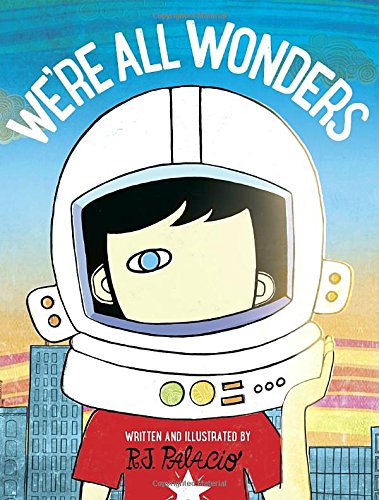 We’re All Wonders by R.J. Palacio
We’re All Wonders by R.J. Palacio
Simple and heartfelt, Aggie shares that he’s just like everyone else, even if he doesn’t look like other people. It hurts his feelings when people point and laugh, so his strategy is to put on his helmet, blast off into space, and get a bigger perspective. He sees that the Earth is full of lots of different people, all of them wonders. He is a wonder, too. We all are.”Look with kindness and you will always find wonder.“
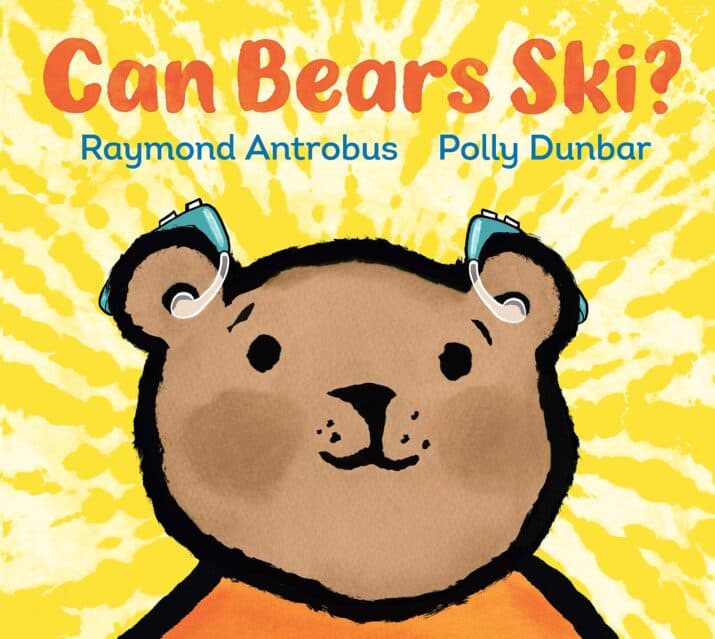 Can Bears Ski? by Raymond Antrobus, illustrated by Polly Dunbar
Can Bears Ski? by Raymond Antrobus, illustrated by Polly Dunbar
I love this excellent story about a bear who mishears (and can’t hear) when people speak to him. He thinks people ask him, “Can bears ski?” It’s very confusing to him as he misses what people are really saying. Eventually, his father takes him to an audiologist who tests him and then helps him hear better with special aids. The author beautifully illuminates the process of testing and getting hearing aids in kid-friendly language. Endorsed by The American Society for Deaf Children because “it stresses the importance of full language and communication access for children” and shows deaf children represented.
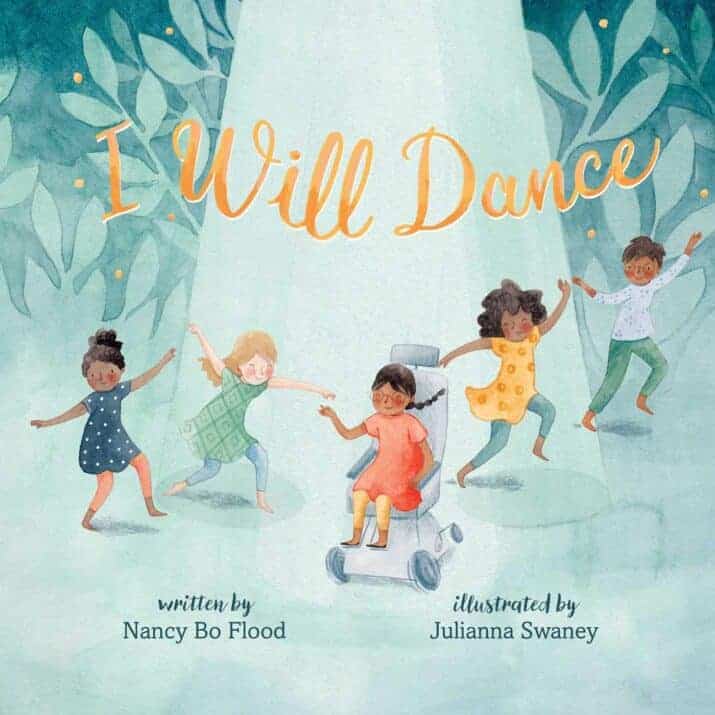
I Will Dance by Nancy Bo Flood, illustrated by Julianna Swaney
Eva, a girl who has Cerebral Palsy (CP), dreams of dancing. She gets the chance at an inclusive dance studio, and it’s a joyful, amazing experience culminating in a special performance! Based on The Young Dance Company in Minneapolis, an inclusive dance studio.
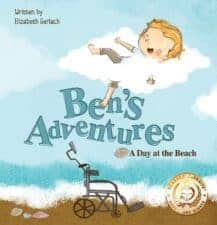
Ben’s Adventures A Day at the Beach by Elizabeth Gerlach
What a wonderful book! It shares what’s going on inside Ben’s imagination as he visits the beach with his family. Ben can’t walk or talk because of his Cerebral Palsy, but he can imagine. He imagines running and flying, counting crabs, and building a sandcastle. Wonderful and playful, this book shows readers that no matter the outside, on the inside, kids all have so much in common.
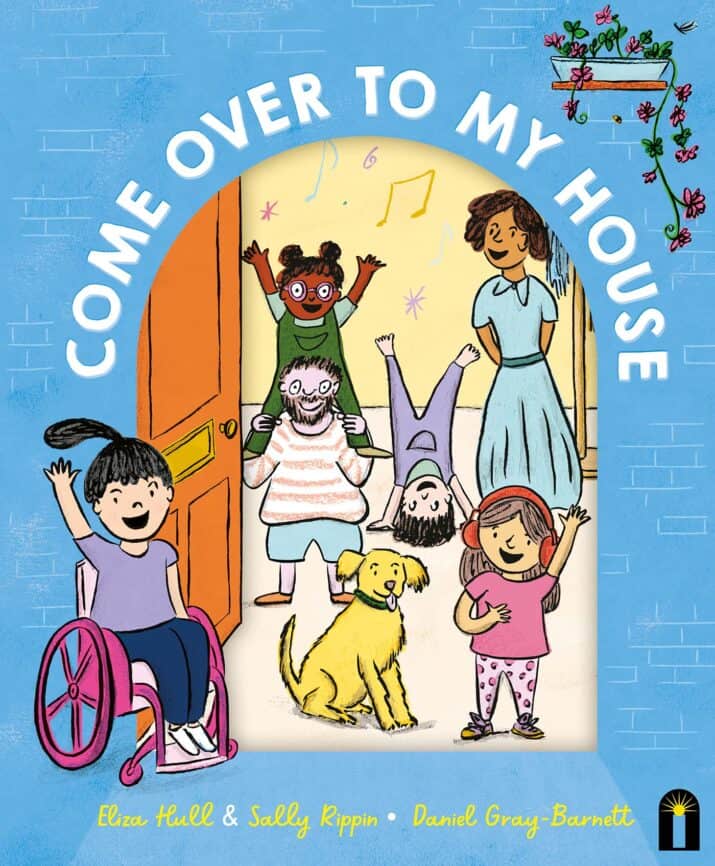
Come Over to My House by Eliza Hull and Sally Rippen, illustrated by Daniel Gray-Barnett
You’re invited to come to your friend’s house where they speak sign, need headphones to block out noise, read Braille with fingers, or pet a working dog on break. All the homes in this rhyming story have a family member with a disability. Normalizing disabilities, we see that friends love to spend time with friends, and they always have fun at their friends’ houses.
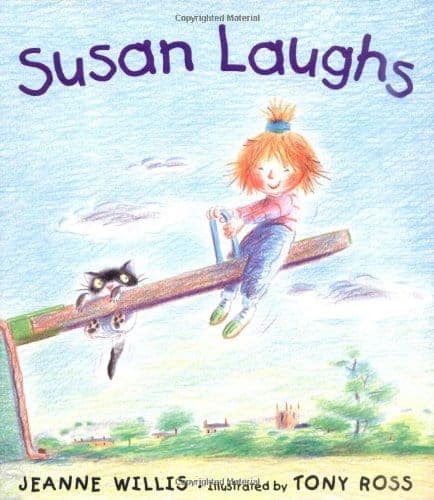
Susan Laughs by Jeanne Willis, illustrated by Tony Ross
Susan is just like you — she plays with friends, she works hard, and she doesn’t like when her cat scratches her. Focusing on the similarities helps kids understand Susan. When the last page reveals that Susan also uses a wheelchair, kids will see that our similarities, not our physical differences make us who we are.
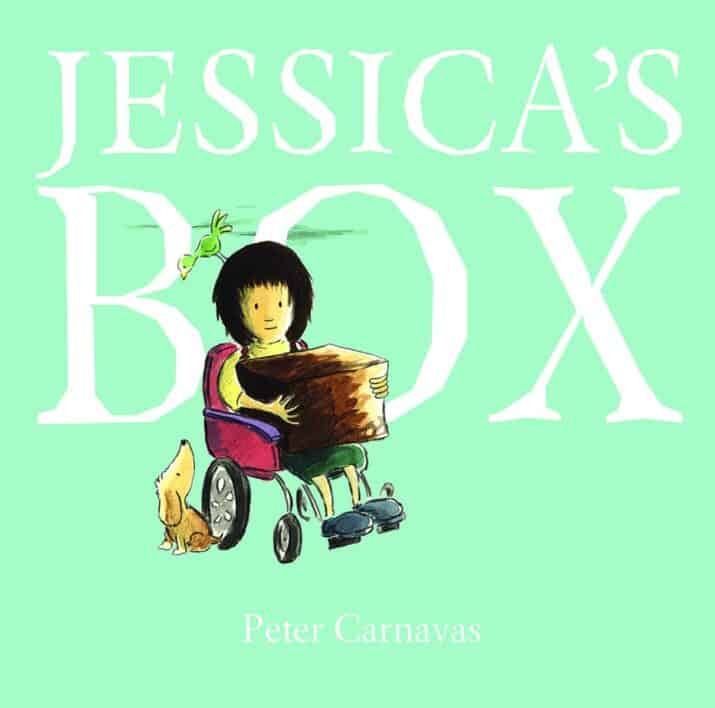
Jessica’s Box by Peter Carnavas
Jessica is in a wheelchair. Her first day at school is very disappointing. She thinks she’d make lots of friends with her box and her bear but that doesn’t happen. So, the next day she puts cupcakes in her box. But no one even says thank you. Jessica wants to disappear into her box! This actually turns out to be a great way to start a hide-and-seek game with a new friend.
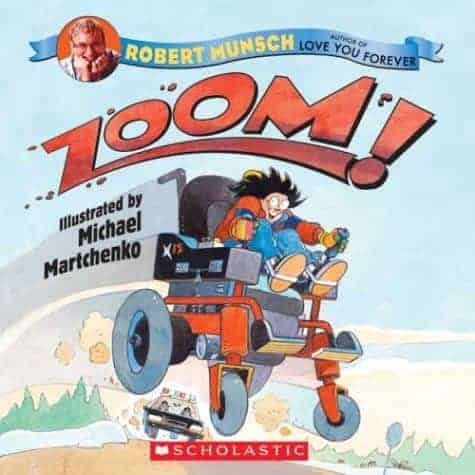
Zoom! by Robert Munsch, illustrated by Michael Martchenko
Lauretta’s 92-speed wheelchair gets her a speeding ticket! Her parents tell her she needs a slower chair. But when she speedily gets her brother to the hospital, her parents change their minds.
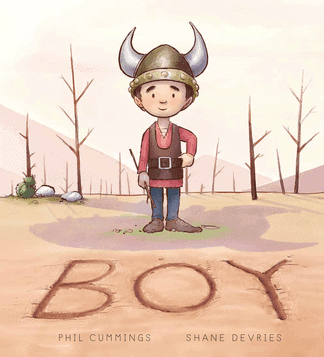
Boy by Phil Cummings, illustrated by Shane Devries
A king and his knights battle a dragon, ruining the forest. Nearby, a deaf village child named Boy can’t hear the battle cries but he senses his parent’s fear. One day, Boy races to rescue a small lizard in the middle of a battle, interrupting the fighting. He draws a picture that helps the two sides decide to stop fighting. Everyone in the village feels relieved. They tell Boy thank you “with dancing hands” (sign language). This is a story of communication and peace with warm, fairytale-like illustrations.
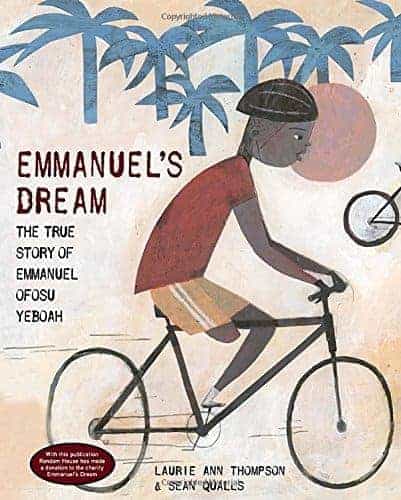
Emmanuel’s Dream: The True Story of Emmanuel Ofosu Yeboah by Laurie Ann Thompson and Sean Qualls
Emmanuel’s mom helped Emmanuel be strong and believe in himself even though he only had one leg. He hopped 2 miles to attend school. He learned to ride a bike. He worked to support his family. He does daily activities with only one leg. As an adult, Emmanuel rode 400 miles across his country of Ghana to spread the message that disability is not an inability. This is an inspiring true story that is a film called Emmanuel’s Gift.
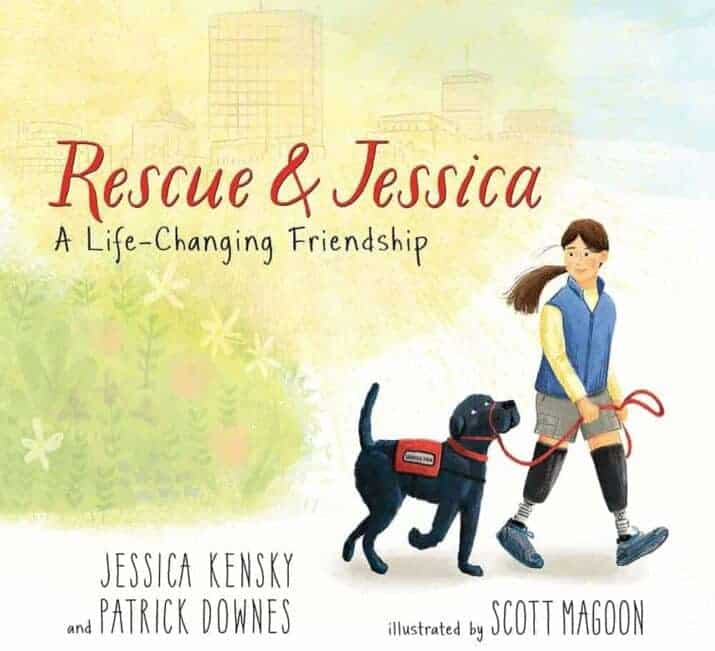
Rescue and Jessica: A Life-Changing Friendship by Jessica Kensky and Patrick Downes, illustrated by Scott Magoon
Based on Jessica’s real-life situation when she was an adult, read how after her leg was amputated, she connected to a service dog named Rescue. It’s important for kids to understand the work that service dogs do. I’ll admit to getting misty-eyed reading this sweet story of friendship and resiliency.
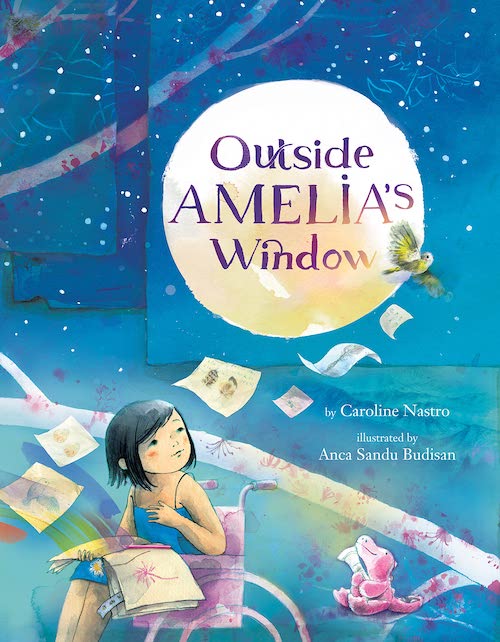
Outside Amelia’s Window by Caroline Nastro, illustrated by Anca Sandu Budisan
Amelia doesn’t think she can go outside again. She’s not ready. Newly in a wheelchair, she stays inside and studies the birds outside her window called Redstarts. When they fly south for winter, she thinks that maybe she can be brave, too. Amelia thinks she can be brave like the birds, so she goes outside and plays with the new friends she meets. Beautiful watercolor illustrations.
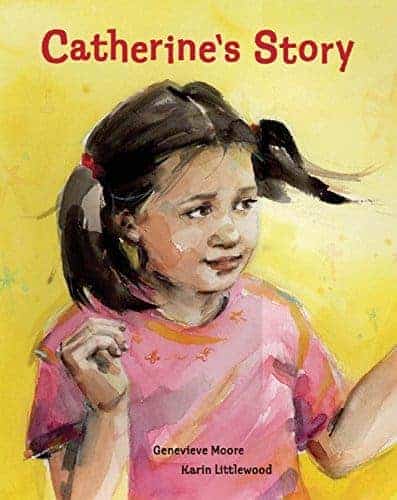
Catherine’s Story by Genevieve Moore, illustrated by Karin Littlewood
Catherine can’t talk, but she can listen. This book shows the many special attributes of Catherine, a young girl like any girl who likes friends and family.
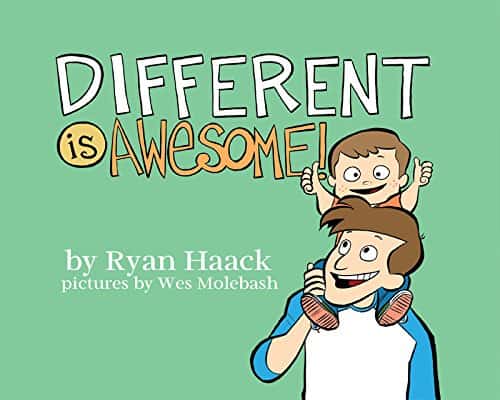
Different is Awesome by Ryan Haack, illustrations by Wes Molebash
It’s the boy’s turn to bring something for show and tell so he brings his brother Ryan. Ryan has limb differences; he was born without his left hand. Ryan and his brother are used to lots of questions so it’s not a problem to show them everything he can do, just differently. The class realize that they’re all different in some way and that what makes us different, makes us awesome.
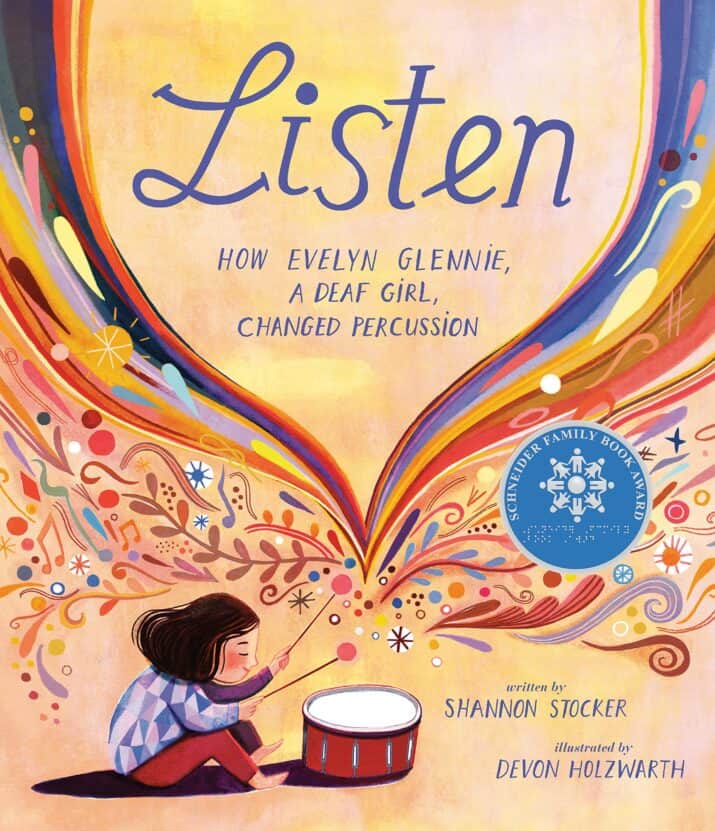
Listen: How Evelyn Glennie, a Deaf Girl, Changed Percussion by Shannon Stocker, illustrated by Devon Holzwarth
Evelyn loves music and learned piano and clarinet as a child, but her hearing started to fail, so she found a way to keep laying music. She listened for the vibrations in her body and became a drummer!
Chapter Books
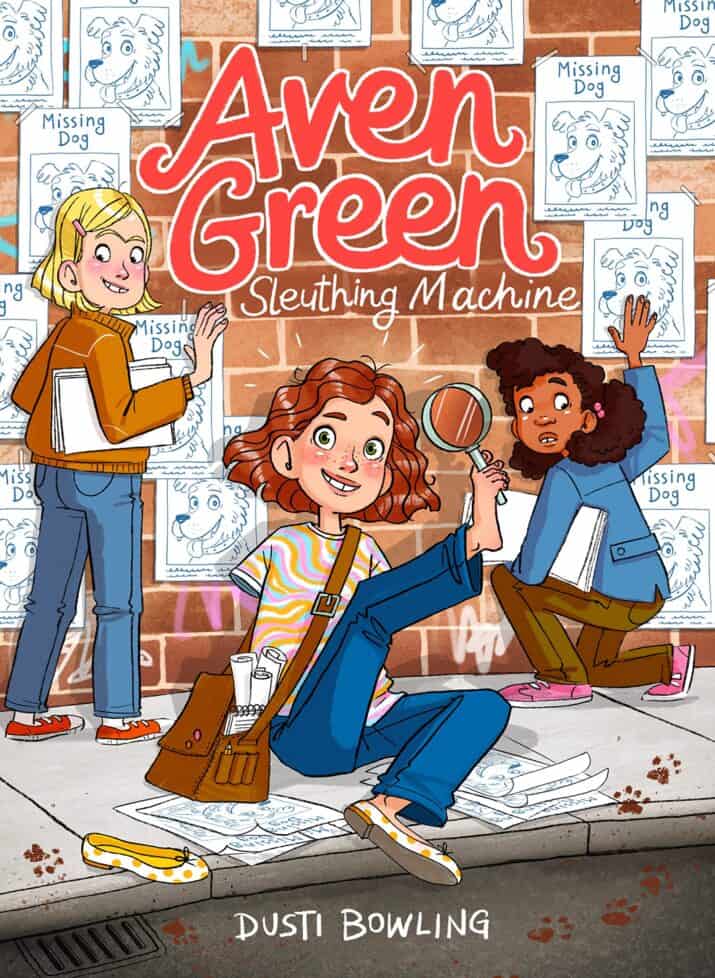
Aven Green Sleuthing Machine by Dusti Bowling, illustrated by Gina Perry
Aven is a girl who was born without arms. She loves solving mysteries, so when her great-grandma’s dog goes missing, she knows she must help find it!
Middle Grade Books About Physical Disabilities
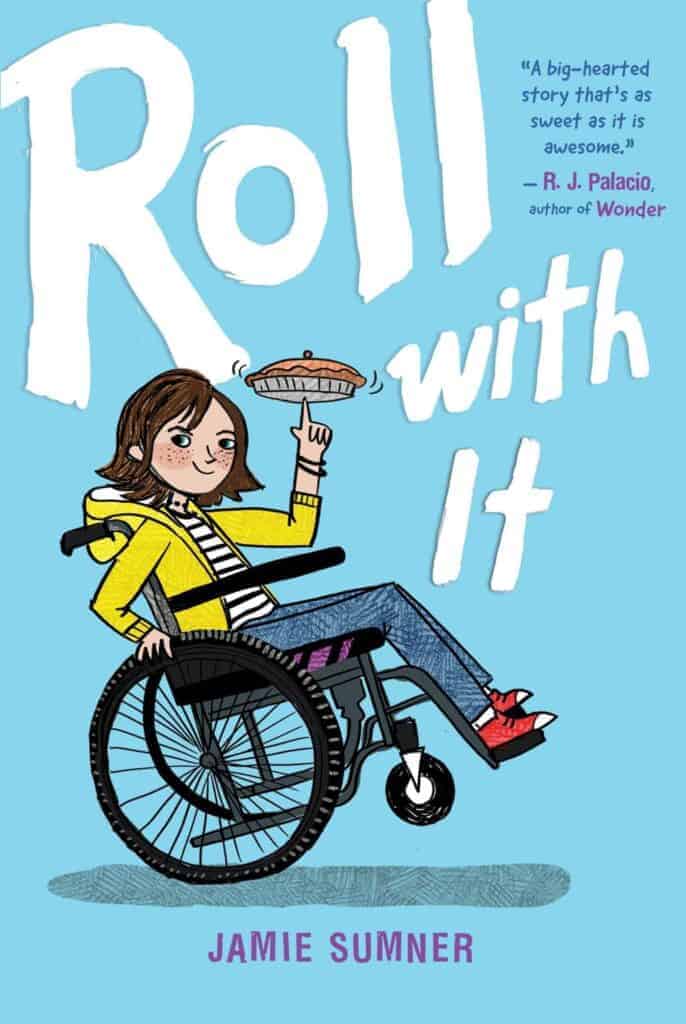
Roll with It by Jamie Sumner
CEREBRAL PALSY
This meaningful story will tug at your heartstrings. It’s narrated by Ellie a girl who loves to bake, who has CP, cerebral palsy, and who rolls through life in a wheelchair. She hates having an aid at school who’s supposed to help her with everything, even going to the bathroom. When her mom moves them to Oklahoma to help care for her grandfather, even though she’s from the so-called wrong side of the tracks, she makes friends with other trailer park kids — the first friends she’s ever had. It’s a sweet story about taking risks, the importance of finding your tribe, and growing up.
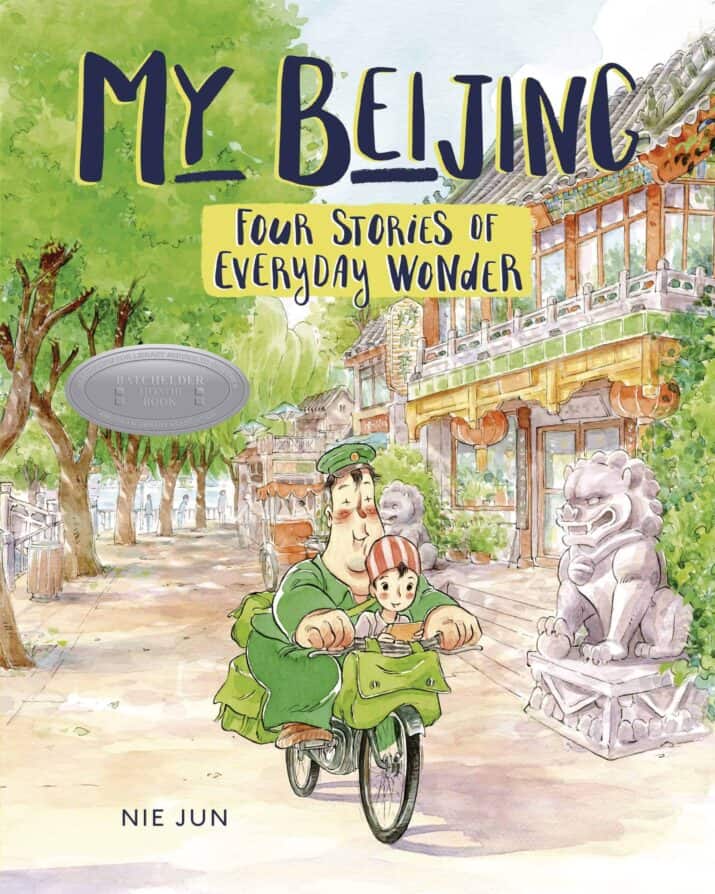
My Beijing: Four Stories of Everyday Wonder by Nie Jun
UNDEFINED PHYSICAL DISABILITY (GRAPHIC NOVEL)
Four sweet stories of Yu’er and her grandpa show their warm bond and Yu’er’s adventures around their Beijing neighborhood. The first story is about Yu’er’s desire to compete in the Special Olympics. Other stories include defending herself from bullies with the help of a new friend as well as a magical old mailbox that transports Yu’er through time. This is a beautifully illustrated book of stories that feels nostalgic and heartwarming.
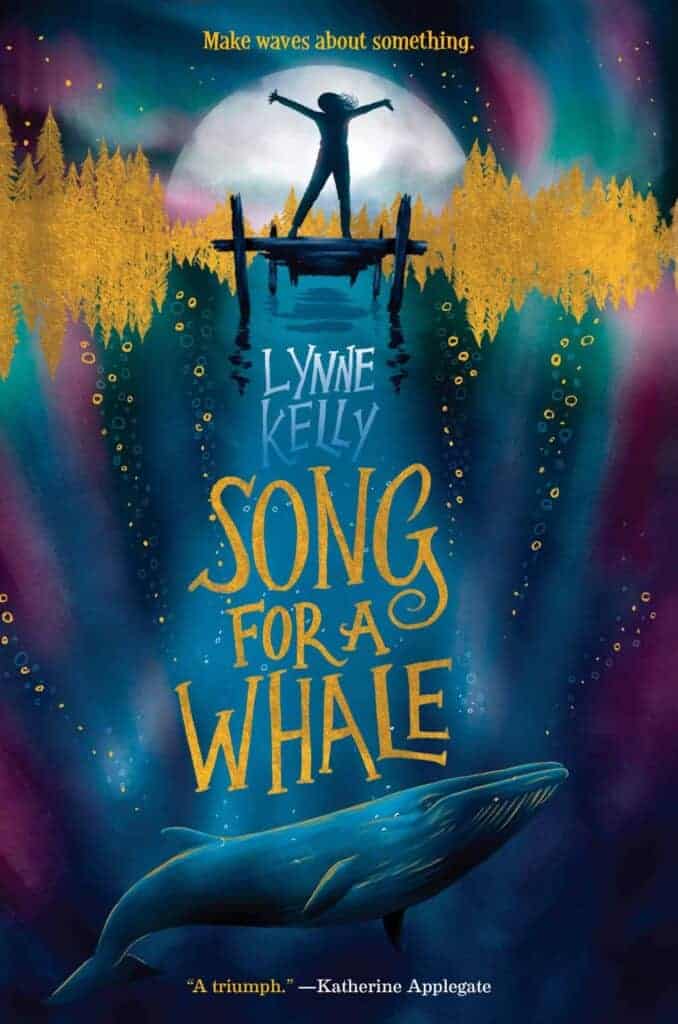
Song for a Whale by Lynne Kelly
DEAF
Iris is a Deaf girl who feels alone at her school and in her immediate hearing family. At school, Iris finds a connection to Blue 55, a whale who is called the loneliest whale in the world because his song is at a different hertz than other whales. She uses her compassionate heart, intelligence, and tinkering skills to write and record a whale song that Blue 55 will hear to know that he’s not alone. Even though she sends the song to the research station tracking Blue 55, Iris wants to see him for herself. She and her grandmother, who is also Deaf, sneak off without Iris’ parents’ permission on a cruise to the Alaskan research station. Their adventure is different than either could have imagined but profoundly life-changing for them both.
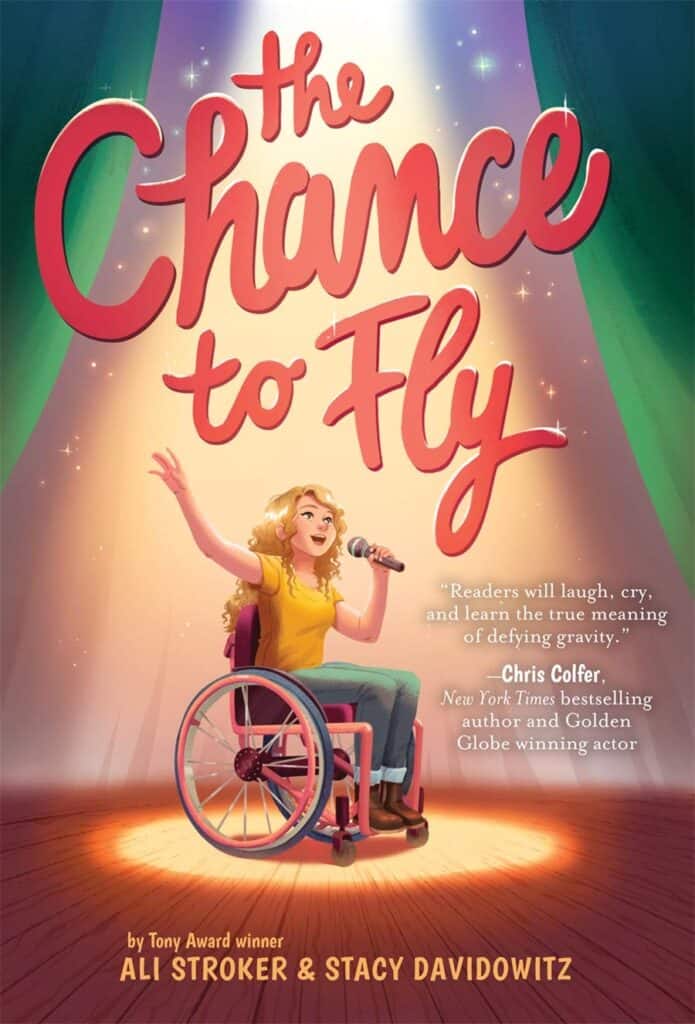
The Chance to Fly by Ali Stroker and Stacy Davidowitz
Musical theater kids, get ready for your next favorite book filled with singing, theater puns, and inclusivity. Nat, a thirteen-year-old girl in a chair, moves to a new town where she auditions for her favorite musical, Wicked telling her parents. She thinks that Nessa is her perfect role since Nessa is also in a chair. The group of kids also involved in the musical are welcoming and accepting. But she needs to show the director just how much she can do — that she can dance in her own way– and it works. Then, when a fire burns the theater down, the show is canceled. Nat rallies the cast to find a solution. (Grit is Nat’s middle name.) (And singing.) Add in a bit of romance, friendship troubles, and a surprising new role for Nat to make this is one gem you won’t want to miss.
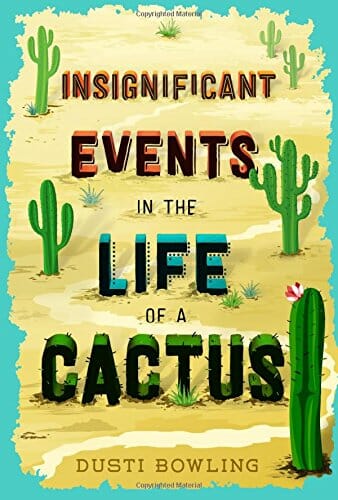
Insignificant Events in the Life of a Cactus by Dusti Bowling
LIMB DIFFERENCE
Aven Green is used to making up creative stories for why she doesn’t have any arms. Especially now that she’s the new kid in school having moved to a new town in Arizona where her parents are the managers a Western theme park. She is an amazing girl — she can do anything without arms that her peers can do with. And, she has incredible parents who love her and push her to be her best self. She befriends a boy at school who also feels different and isolated from the other kids. His name is Connor and his Tourette Syndrome makes him hide in the library and not go out in public. But he and a new friend, Zion, hang out with Aven at the theme park where they investigate a mysterious woman who looks just like her and a hidden storage shed. This story is about restorative friendship, facing your fears, and discovering your true (significant) potential.
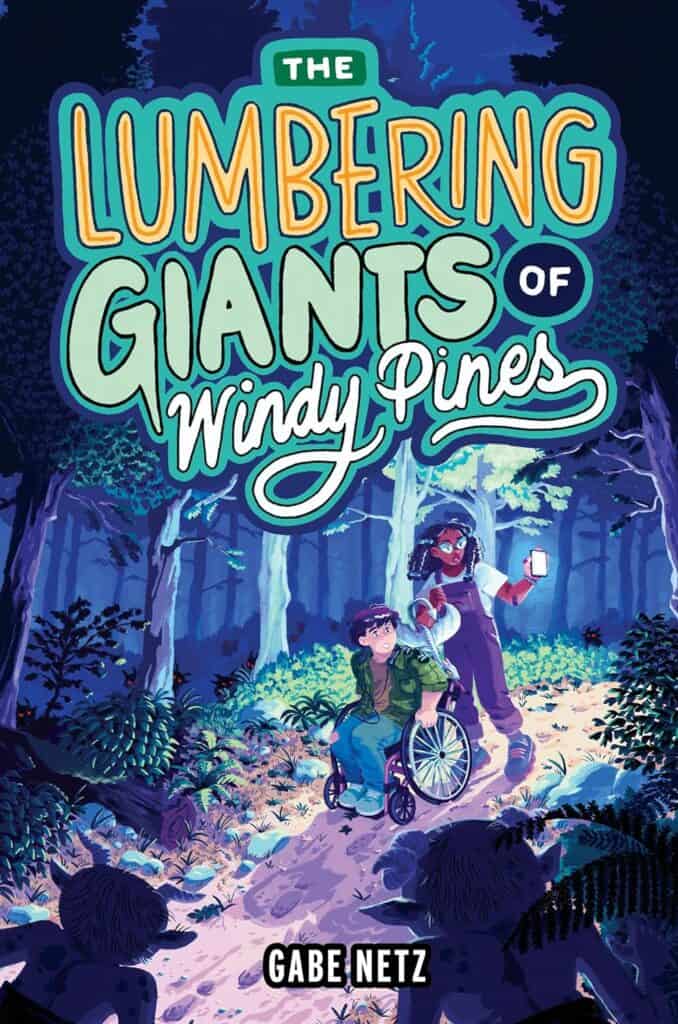
Lumbering Giants of Windy Pines by Mo Netz
Excellent writing and pacing! When Jerry’s mom disappears into the woods, it’s up to Jerry to find her. Before the disappearance, Jerry’s mom got a job at the motel where they just landed — but it doesn’t seem like it’s a cleaning toilets kind of job. Alone in their room at night, Jerry hears a mysterious radio transmission. She learns that people in the area have been vanishing without a trace for years, according to her new friend. Jerry doesn’t let being in a wheelchair stop her from finding her mom. She rolls into the woods, following their car tracks. Little does she know that her new friend is following behind and will be an asset to the rescue mission. Or that she’s about to roll right into dangerous demons and ghosts!
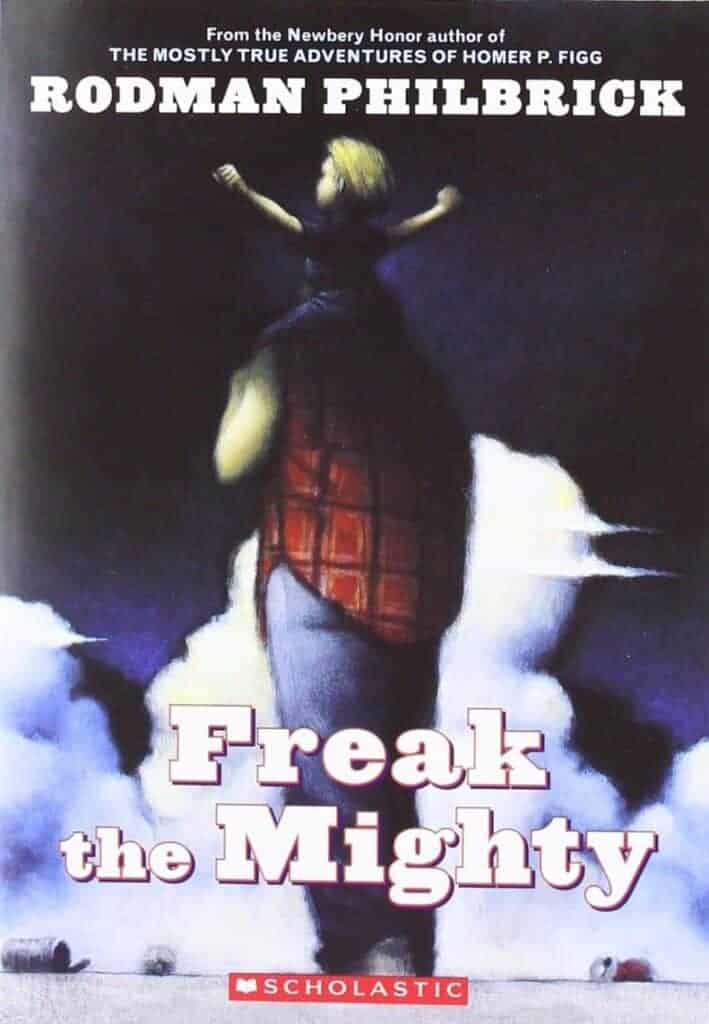
Freak the Mighty by Rodman Philbrick
PHYSICAL DIFFERENCE
This is a moving story of a friendship between a large boy with learning disabilities and a very small boy with physical disabilities. Together, they overcome the bullying at school. It’s a sad but powerful story of friendship and resilience.

The Baking Life of Amelie Day by Vanessa Curtis
CYSTIC FIBROSIS
I enjoyed this chapter book so much! The writing flows, the plot is engaging, the characters are fascinating — especially Amelie — and learning about living with Cystic Fibrosis is quite eye-opening. Amelie loves to bake (could you guess from the title?) and she’s made it to the semi-finals of a teen baking contest in New York City. Unfortunately, her health deteriorates (which happens when you have CF) and her mom won’t let Amelie compete.
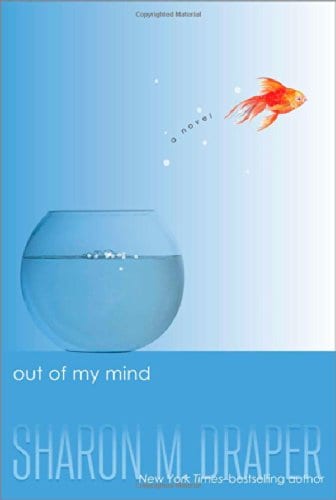
Out of My Mind by Sharon M. Draper
CEREBRAL PALSY
Just because Melody can’t walk or talk due to cerebral palsy doesn’t mean she isn’t smart — and she is smart! She’s just sick of people thinking she’s dumb and wants out of the trap of her mind. She finds a way to communicate but is still treated poorly by her peers. Realistic, sometimes very painful, and important for everyone to read. GREAT class book or book club book.
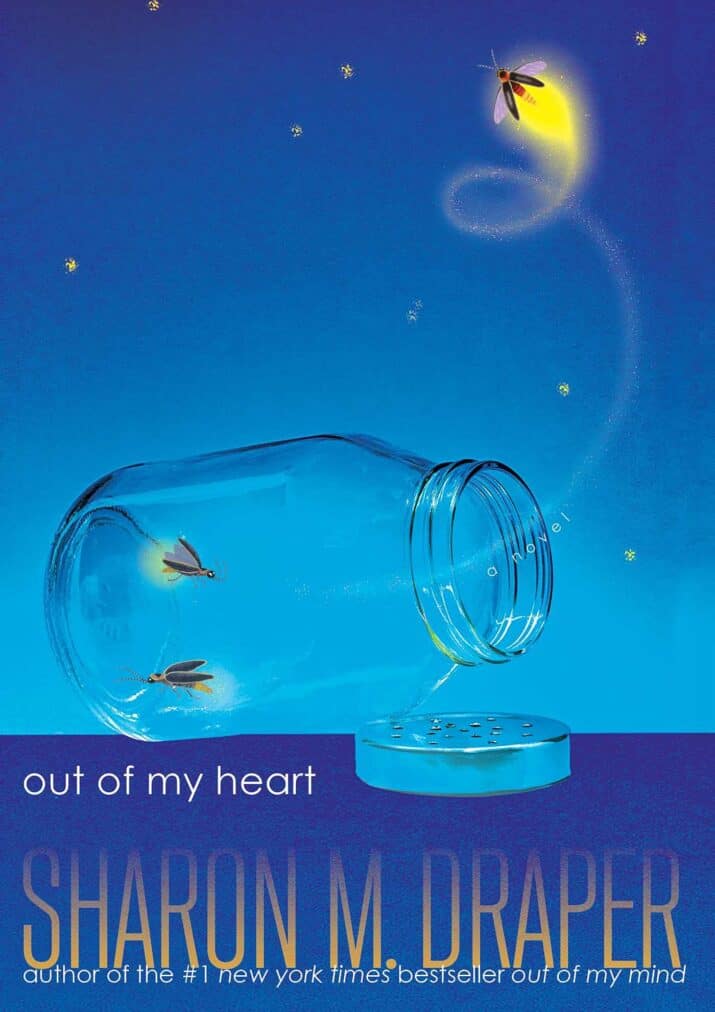
Out of My Heart by Sharon M. Draper
You don’t have to be a fan of the first book, to absolutely LOVE and ADORE Melody and her experiences in this wonderful second book. Draper’s writing draws you into Melody’s experience, we feel like we are sharing Melody’s life which is authentic, beautiful, and important for empathy-building and understanding for differently-abled people. In this second book, Melody gets to go to a summer camp for disabled kids and it gives her amazing experiences that she never thought she’d be able to do because she’s in a wheelchair…she swings on a swing and plays outside with friends for the first time, she swims, rides a horse, zip lines, meets a boy who likes her, and dances with that boy!
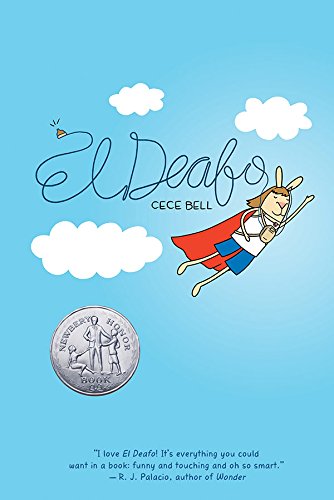
El Deafo by Cece Bell and David Lasky
HEARING IMPAIRMENT
A multiple award-winning graphic novel, Cece Bell shares the story of growing up with a hearing impairment, using a very bulky hearing aid, and finding her place in the world. Funny and moving, this is a beautiful coming-of-age story of courage and determination.
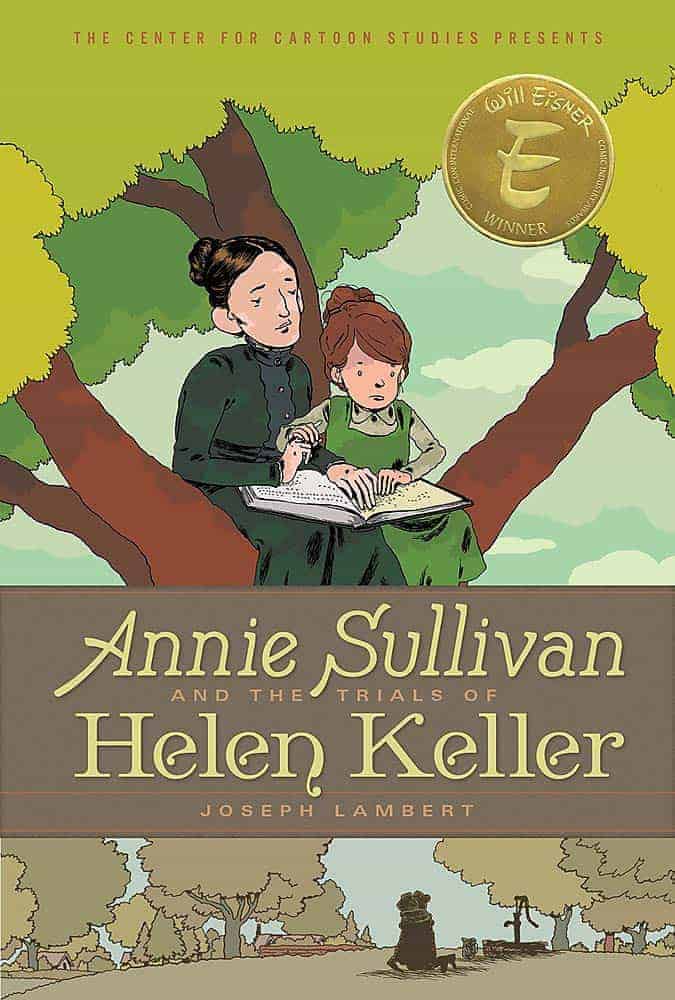
Annie Sullivan and the Trials of Helen Keller by Joseph Lambert
DEAF, BLIND
Excellent! The book shows both Annie and Helen’s strengths and weaknesses as well as really significant character arcs. If you don’t know the story, or even if you do, read this book. You’ll be entranced with how laborious it was to teach Helen and how Annie’s persistence paid off in the end.
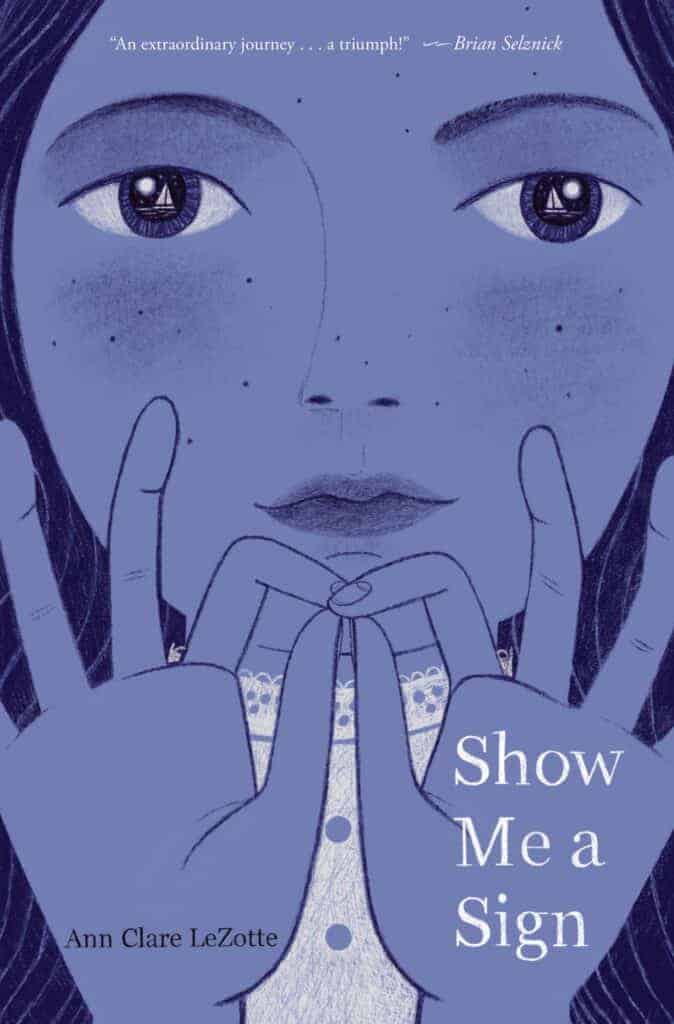
Show Me a Sign by Ann Clare LeZotte
DEAF
Set in the Martha’s Vineyard community of Chilmark where a high percentage of Deaf individuals live, Mary’s a smart girl who speaks sign language. But when a researcher arrives with preconceived notations of the “infirmity” of Deaf people, he kidnaps Mary as a “live specimen.” For months she’s imprisoned and forced to work, then locked in a room to be studied with no way to communicate by signing or writing. Not only will you learn about this interesting historical community and life as a Deaf person, but you’ll also fall in love with the admirable heroine in this compelling story.

Wonder by R.J. Palacio
FACIAL DIFFERENCE
When he starts public school in fifth grade, Auggie is teased because his face doesn’t look like that of other kids. He changes throughout the story, deciding to stop hating his face to focusing on humor and kindness which transforms his classmates and community as well. This touching story is life-changing, encouraging empathy and kindness in readers as well.

Marshmallow & Jordan by Alina Chau
PARALYZED
This is an excellent graphic novel set in Indonesia about a basketball player named Jordan who had an accident that paralyzed her from the waist down. She meets an injured elephant (diety-in-training) who helps her find a new sport. Their friendship helps both of them to grow in different ways. Jordan sees herself differently and Marshmallow becomes more confident.
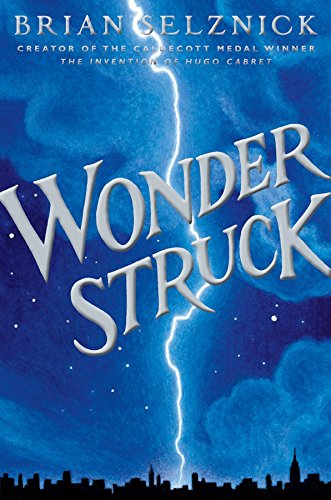
Wonderstruck by Brian Selznick
DEAF
Parallel stories about two different people — Ben and Rose — who each secretly wish their lives were different. Ben longs for the father he has never known. Rose dreams of a mysterious actress whose life she chronicles in a scrapbook. When Ben discovers a puzzling clue in his mother’s room and Rose reads an enticing headline in the newspaper, both children set out alone on desperate quests to find what they are missing. One story is told completely in illustrations.
YA Books About Physical Disabilities
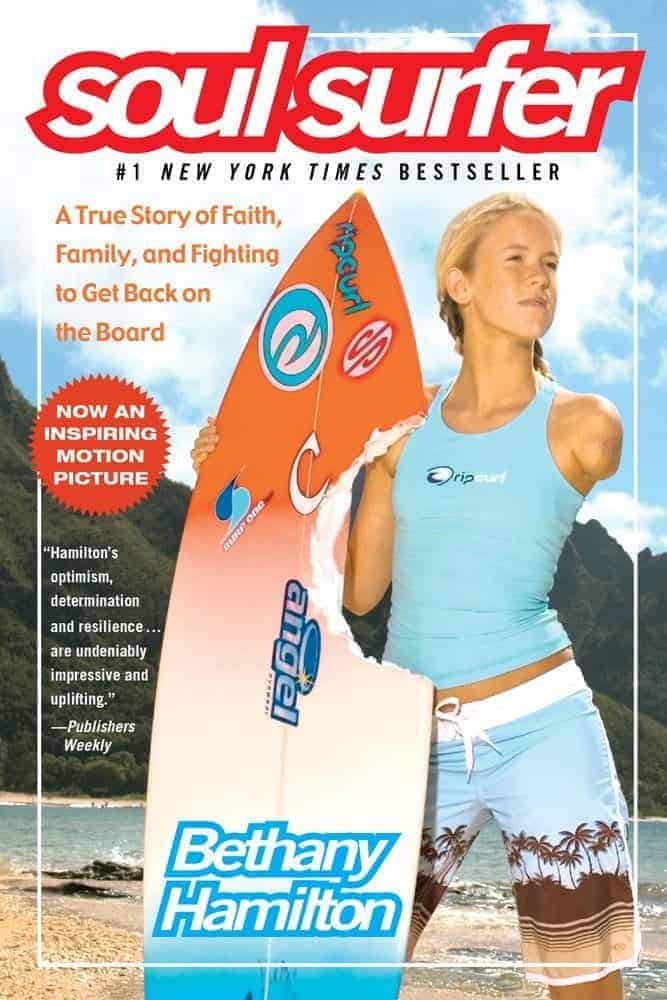
Soul Surfer by Bethany Hamilton
AMPUTATED ARMS
Surfer, Bethany, loses her arm to a shark attack. In this book, we learn her story and how she continued on with her life, surfing, and living life to the fullest.
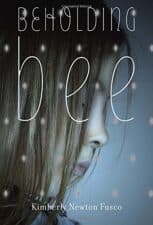
Beholding Bee by Kimberly Newton Fusco
BIRTHMARK
Bee is an orphaned girl who runs away from the exploitive traveling circus. She’s sensitive about the birthmark on her face, and feels like an outsider everywhere she goes. Fortunately, she finds two “aunts” who help Bee find her inner strength and show her the meaning of love.
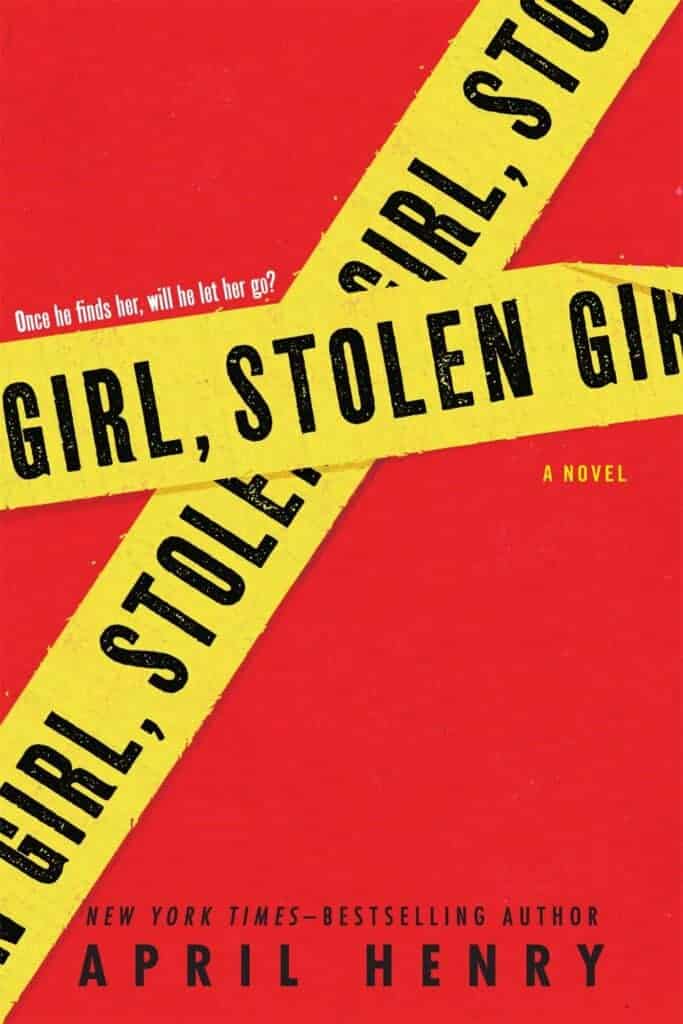
Girl, Stolen by April Henry
VISION IMPAIRMENT
While 16-year old Cheyenne’s mom runs into the store for her pneumonia medicine, Griffin steals their car with Cheyenne in it. Griffin’s father and his friends hold Cheyenne for ransom in the hopes her famous father will pay up. Cheyenne, who is currently sick and also blind, must use all her other senses to escape. She hopes Griffin will even help her.
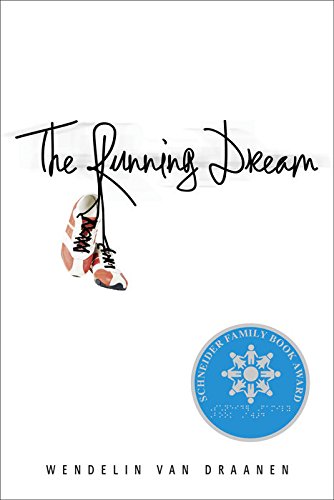
The Running Dream by Wendell Van Draanen
AMPUTEE / CP
When Jessica loses a leg in a car accident, she’s treated differently — as if she were invisible, just like she treated another girl named Rosa, who has CP. This book will help you, like Jessica, see people for who they are, not what their physical conditions are. Any other books you’d like to see on this list?


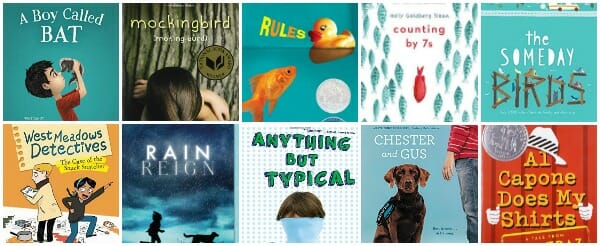
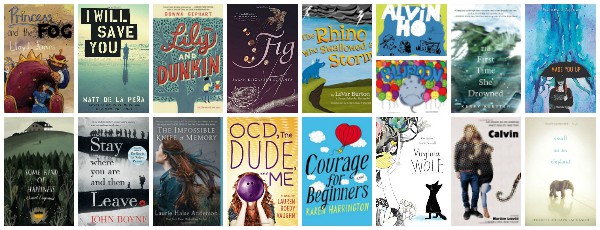
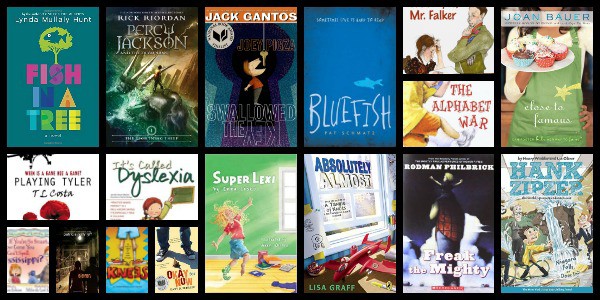
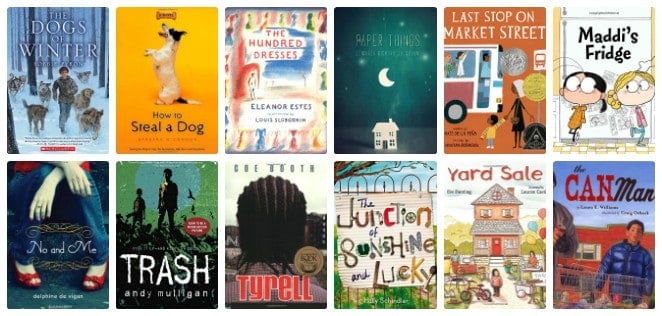
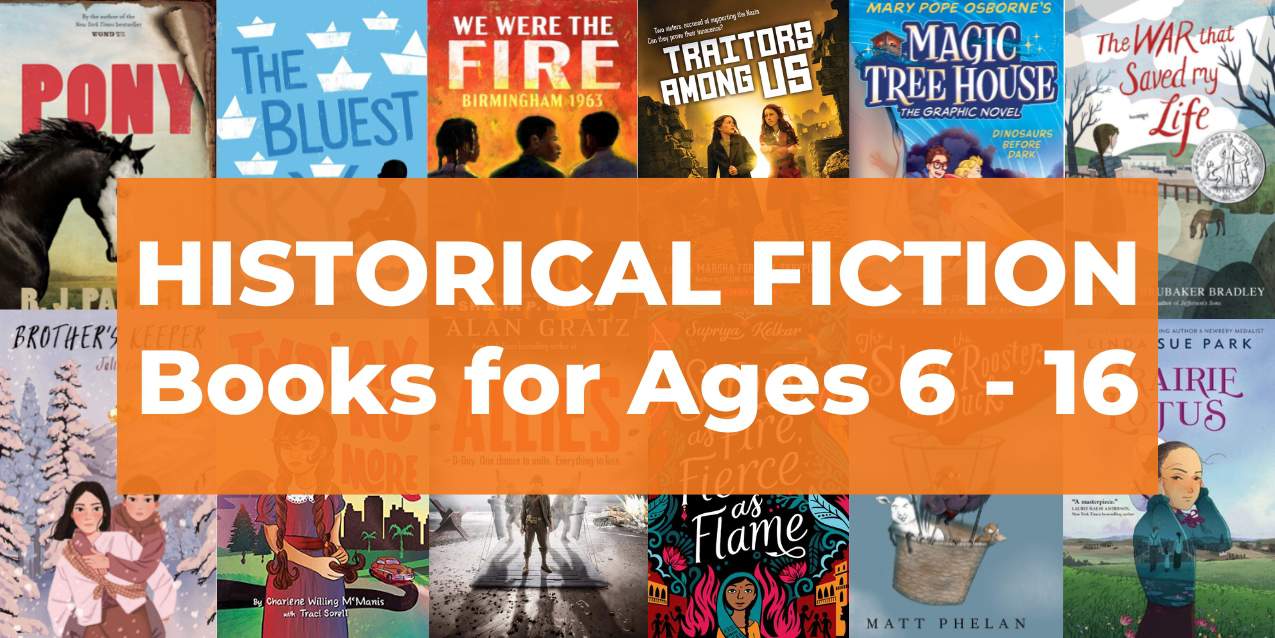
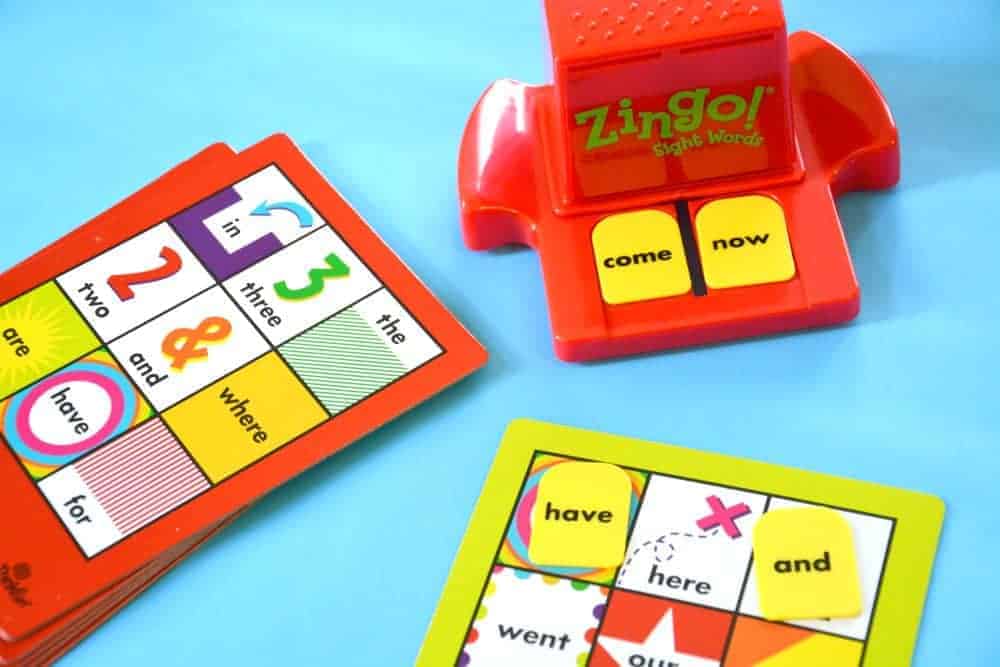
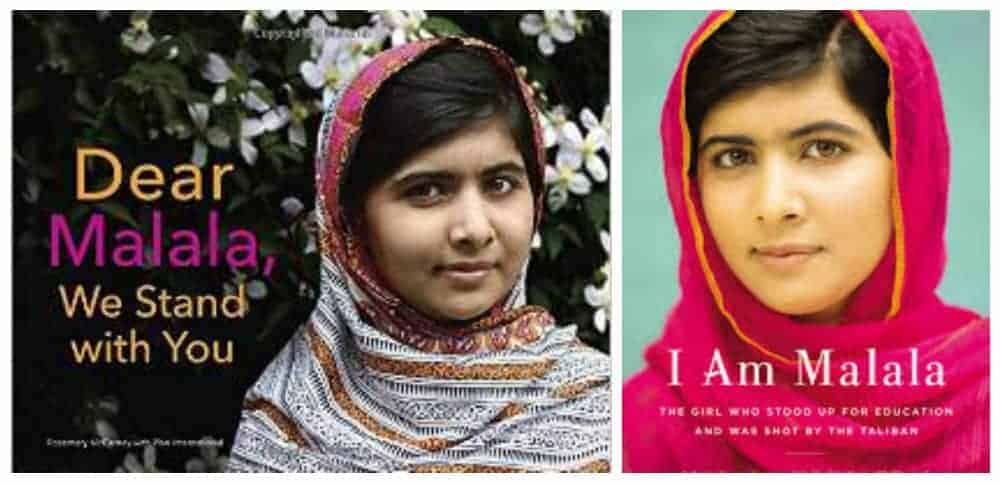
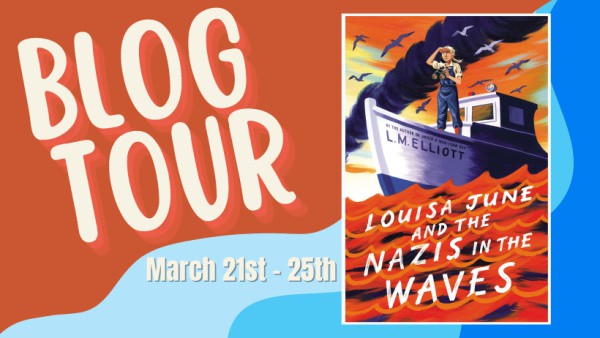
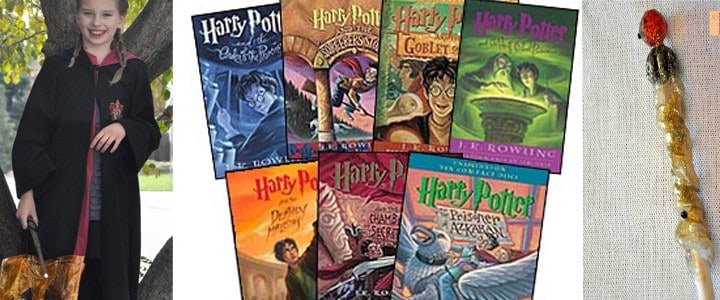
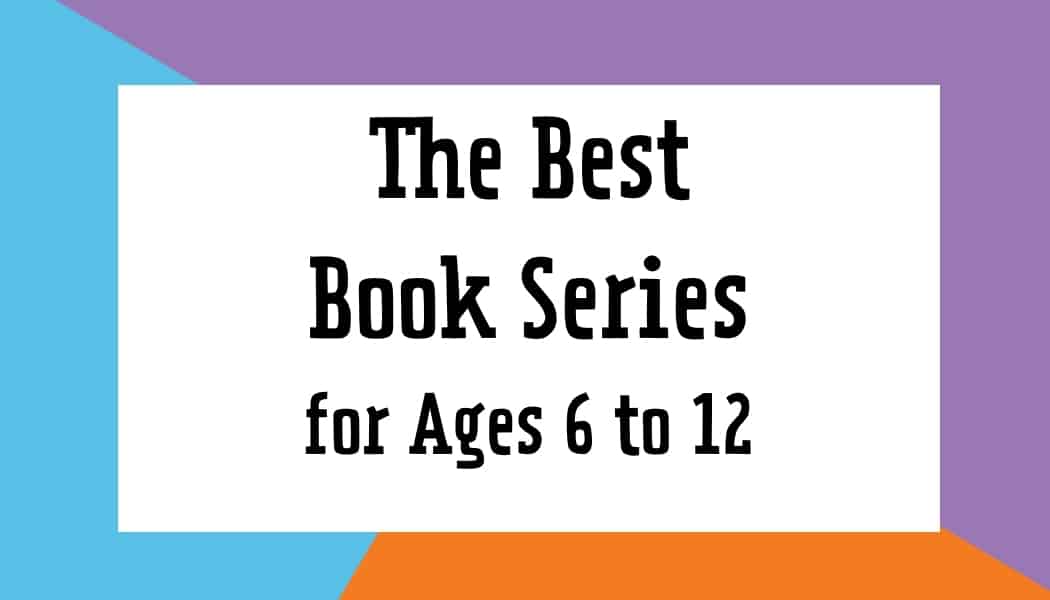
Amazing range of books!
Do you by any chance have one for a child in a body cast for scoliosis? Something to help my 2 1/2 yr old grandson understand whats about to happen to him?
If not, does anyone know of a book on this subject please?? Thank you.
There is a middle grade book for kids who are 9 to 12 called Braced by Alyson Gerber. Let me reach out to the author to see if she knows about a picture book. Two is pretty young for a book on this but I’ll search around.
Thank you for your list. I cannot wait to add some of these to my classroom library.
You’re very welcome!
Love this list!
Also have one more to add! ?
“Hiya Moriah” by Victoria Nelson
thanks for the book suggestions!
It seems that sometimes there is a printable/download option for your lists and sometimes not, maybe I am missing it but I love to share these great lists digitally and also in hard copy. Thanks!
I will get to this first thing on Monday!
Here you go — https://imaginationsoup.net/wp-content/uploads/2016/03/Childrens-Books-with-Characters-Who-Have-Physical-Differences.pdf
“The Man Who Loves Clowns” is perfect for understanding Down Syndrome. But beware, tissues are needed!
thanks for the suggestion!